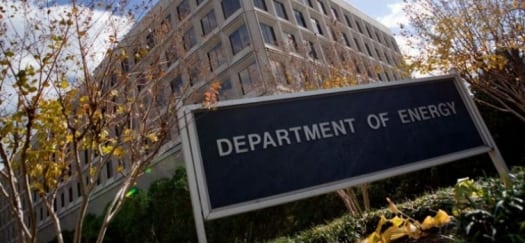
The Energy Department’s Office of Environmental Management would get some $6.6 billion in fiscal 2018 and take on $55 million worth of new cleanup projects from active nuclear-weapon sites, under a budget bill approved Thursday by the Senate Appropriations Committee.
The panel’s recommendation for the Office of Environmental Management (EM) is nearly 3 percent above the current appropriation and about 1.5 percent above the White House’s request for the budget year beginning Oct. 1. The Senate proposal, which is not yet scheduled for a floor vote, would fund EM more than 3 percent higher than a companion bill approved last week by the House Appropriations Committee. The House bill tracks the Donald Trump administration’s request more closely than does the Senate measure.
The Trump administration had requested $225 million for EM to take over an unquantified number of unspecified sites DOE’s semiautonomous National Nuclear Security Administration no longer needs for active weapons programs. Neither congressional Appropriations Committee approved that much for EM to take over these so-called excess facilities, but both approved some funding.
The Senate committee would give EM $55 million for excess facilities in 2018, including $15 million to take over cleanup of unspecified sites at the Lawrence Livermore National Laboratory in Livermore, Calif., and $40 million to clean up unspecified facilities at the Y-12 National Security Complex in Oak Ridge, Tenn.: a site represented by Senate Appropriations energy and water subcommittee Chairman Lamar Alexander (R-Tenn).
The Senate’s recommendation for excess facilities is 25 percent lower than the House’s. The House also wanted to fund transfer of excess facilities at Livermore and Y-12, plus one at DOE’s Idaho Site.
Generally, the Senate’s bill would give most DOE EM sites a raise, compared with the funding they received in the 2017 omnibus appropriations bill signed into law May 5. Notably, however, the defense environmental cleanup budget for the Idaho Site would drop by about 8 percent compared with 2017, to about $350 million. The Richland Operations Office, which manages cleanup of solid waste at DOE’s Hanford Site near Richland, Wash., would get just about a 1.5-percent budget cut from 2017 to just over $825 million.
Of the three EM cleanups funded by the Uranium Enrichment Decontamination and Decommissioning Fund, the Portsmouth Site near Piketon, Ohio, would get the biggest bump compared with 2017 under the Senate bill: a greater-than-11-percent increase to roughly $350 million.
Meanwhile, the Waste Isolation Pilot Plant near Carlsbad, N.M., DOE’s deep-underground repository for transuranic waste, would wind up with about what the Trump administration asked and the House committee already recommended: $320 million or so for fiscal 2018, including money to begin construction on a new ventilation system that, by the middle of next decade or so, would allow workers to tunnel out new waste-disposal space while also performing mine maintenance and routine disposals.
Currently, underground ventilation at the Waste Isolation Pilot Plant is so low that personnel can dispose of waste or perform repairs, but not both.
The Senate is rushing to get appropriations bills out of committee, but the upper chamber has not scheduled any floor action yet.
The House, meanwhile, is packaging several appropriations bills together, including DOE’s 2018 budget recommendation, for a floor vote scheduled for next week, according to an aide for Majority Whip Kevin McCarthy (R-Calif).
Overall, the Senate Appropriations Committee’s bill provides about $31 billion for DOE in 2018: roughly 2 percent more than the 2017 appropriation, more than 10 percent above what the Trump administration requested, and more than 5 percent higher than the House recommended.